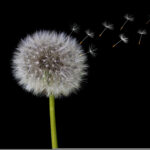What is Ayurveda? The Sanskrit term Ayurveda translates to “knowledge of life,” and the principles of this ancient wisdom remind us that the entire web of life is intricately interwoven. Ayurvedic knowledge originated in India more than 5,000 years ago and is often called the “Mother of All Healing.” It stems from the ancient Vedic culture and was taught for many thousands of years in an oral tradition from accomplished masters to their disciples. Some of this knowledge was set to print a few thousand years ago, but much of it is inaccessible. The principles of many of the natural healing systems now familiar in the West have their roots in Ayurveda,
According to Ayurveda, the conditions during conception of a child manifest as prakriti (genetic constitution). The season during which the conception took place, mother’s psychological state, age of the parents all manifest as prakriti during conception. It makes perfect sense that prakriti is affected by seasonal changes during life time. Every person has a unique prakriti, which consists of a combination of Vata (air and space elements), Pitta (fire element) and Kapha (earth and water elements) doshas (energies governing the psycho-physiological state of a person).
prakriti – genetic constitution
Vata – air and space elements
Pitta – fire element
Kapha – earth and water elements
doshas – energies governing the psycho-physiological state of a person)
Ayurvedic Spring Awakening
By Uma Hingorani
“The beautiful spring came; and when Nature resumes her loveliness, the human soul is apt to revive also.” ~ Harriet Ann Jacobs
In ancient India, Time was viewed as “a self-existent God.” In Ayurveda, Time is considered a powerful force in governing the stages of life and intertwine it with Nature. Seasons, as natural Time periods, indicate the relationship between the Sun, Moon and Earth.
As winter is coming to a close and spring is on its way, the changing seasons have a big impact on our bodies. If we don’t take care, then the doshas can become vitiated, or out of alignment and cause the body-mind to suffer. In the winter time, our bodies become cold and dry and kind of hibernate in the long, dark nights. To counteract the high Vata conditions of winter, we tend to eat foods which are sweet, soft, heavy, oily and heating. We may also cover up the body and head to protect the cold and wind from further aggravating Vata.
The thirty days (fifteen days before Spring and fifteen days after Spring) of change of seasons is known as ‘Yama dhrishti kaala’ in Ayurveda. This is the time when Yama, the God of death, glances our way, so to speak. Our Immunity is getting weak. People become sick more easily with the spreading of viruses through nasal secretions. Spring-time allergies and hay fever are common due to the accumulated Kapha in the body from the greasy foods consumed in winter and the moisture-laden air of Spring. When the sun’s hot rays hit the body, it melts the Kapha, unleashing sneezes, leaky eyes and drippy noses.
During this time period, Ayurveda recommends eating light to moderate, easily digestible foods, such as hot soups with pungent, bitter and astringent-tasting vegetables (spinach, kale, dandelion greens, cabbage, broccoli, beets, carrots and mushrooms, etc.) combined with light grains like barley, quinoa, buckwheat. Spices such as turmeric, ginger, cumin and black pepper not only add delicious flavors, but help cleanse the body of toxins and kindle the digestive fire. Onions and garlic also revitalize the dull body. Drinking warm or hot water upon awakening and in between meals serves to remove accumulated toxins. Fruits, such as berries, peaches and pomegranates, should be eaten alone. Finally, the consumption of meats, oils, dairy/butter and ghee should be minimized or avoided. Of course, these recommendations should be tailored to each individual’s dosha.
Doing yoga, pranayama (breathing exercises) and physical activity appropriate for each individual along with these dietary changes, can further boost immunity and well-being.
By following a proper dietary and lifestyle regime, the change from winter to spring can truly harmonize the body-mind-soul with Nature and awaken the senses to Spring’s beauty!
References:
- https://ijapr.in/index.php/ijapr/article/view/264/249
- https://www.banyanbotanicals.com/info/ayurvedic-living/living-ayurveda/seasonal-guides/spring-guide/




